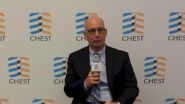(Press-News.org) Professor Elly Tanaka and her research group at the DFG Research Center for Regenerative Therapies Dresden - Cluster of Excellence at the TU Dresden (CRTD) demonstrated for the first time the in vitro growth of a piece of spinal cord in three dimensions from mouse embryonic stem cells. Correct spatial organization of motor neurons, interneurons and dorsal interneurons along the dorsal/ventral axis was observed.
This study has been published online by the American journal "Stem Cell Reports" on 30.10.2014.
For many years Elly Tanaka and her research group have been studying the regenerative potential of axolotls at the molecular level. The Mexican salamanders have the potential to regenerate their spinal cord and other organs to restore full functionality after injury. Mammals such as humans are not able to regenerate most organs. The restoration of the spinal cord in axolotl occurs in a three dimensional structure similar to an embryonic spinal cord. Due to their positions in the tissue, cells in the regenerated spinal cord know which function to perform in the restored tissue. "In this study we applied the knowledge gained about the regenerative potential in axolotls to a mammal, the mouse" explains Professor Elly Tanaka.
Single mouse embryonic stem cells embedded in a three-dimensional matrix and were grown in neural differentiation medium led to the clonal development of neuroepithelial cysts. These cysts settled in the midbrain and hindbrain along the neural axis. "Our goal, however, was to generate spinal cord in vitro," says Dr. Andrea Meinhardt, a postdoc at the CRTD. "For this reason we added retinoic acid to the culture medium on the second day of the 3D cell culture." The result not only caused the neural tissue to switch to spinal cord but also induced the formation of a local signaling center for forming all the different cell types of the spinal cord. "For the first time we could hereby reconstruct the structure of a typical embryonic neural tube in vitro," said Andrea Meinhardt.
„With this study we have moved a tiny step closer to turn the idea of constructing a three-dimensional piece of spinal cord for transplantation in humans into reality" says Elly Tanaka.
INFORMATION:
Publication
Andrea Meinhardt1, Dominic Eberle1, Akira Tazaki1, Adrian Ranga4, Marco Niesche2, Michaela Wilsch-Bräuninger3, Agnieszka Stec1, Gabriele Schackert2, Matthias Lutlof4, Elly M. Tanaka1,3
3D reconstitution of the patterned neural tube from embryonic stem cells.
Stem Cell Reports
1 DFG-Research Center for Regenerative Therapies Dresden – Cluster of Excellence, TU Dresden, Germany
2Faculty of Medicine, Neurosurgery Department, TU Dresden, Germany
3Max Planck Institute of Molecular Cell Biology and Genetics, Dresden, Germany
4Laboratory of Stem Cell Bioengineering, Institute of Bioengineering, Ecole Fédérale de Lausanne, Switzerland
Photo
The confocal cross-section of a three-dimensional cyst shows the floor plate (green), which was formed after the addition of retinoic acid. Furthermore, the development of motor neurons (white) as well as interneurons (red) was shown. The Dresden researchers could demonstrate in vitro the typical pattern of an embryonic spinal cord. ©CRTD/Andrea Meinhardt
Reconstruction of a patterned piece of spinal cord in 3-D culture
Mouse embryonic stem cells differentiate into structures that resemble the neural tube and show the typical embryonic patterning
2014-10-30
ELSE PRESS RELEASES FROM THIS DATE:
Harnessing error-prone chips
2014-10-30
As transistors get smaller, they also grow less reliable. Increasing their operating voltage can help, but that means a corresponding increase in power consumption.
With information technology consuming a steadily growing fraction of the world's energy supplies, some researchers and hardware manufacturers are exploring the possibility of simply letting chips botch the occasional computation. In many popular applications — video rendering, for instance — users probably wouldn't notice the difference, and it could significantly improve energy efficiency.
At ...
Female frogs modify offspring development depending on reproduction date
2014-10-30
Global warming is altering the reproduction of plants and animals, notably accelerating the date when reproduction and other life processes occur. A study by the University of Uppsala (Sweden), including the participation of Spanish researcher Germán Orizaola, has discovered that some amphibians are capable of making their offspring grow at a faster rate if they have been born later due to the climate.
Over recent decades many organisms, both plants and animals, have experienced a notable advance in the date when many of their life processes (like reproduction, migration ...
Could daylight savings time be a risk to diabetics?
2014-10-30
Soon, many will turn back the hands of time as part of the twice-annual ritual of daylight savings time. That means remembering to change the alarm clock next to the bed, which will mean an extra hour of sleep before getting up in the morning.
But for some diabetics who use insulin pumps, Saleh Aldasouqi, associate professor of medicine at Michigan State University, suggests that remembering to change the time on this device should be the priority.
"Some diabetes patients who use insulin pumps may forget to change the clock that is found in these devices," said diabetes ...
Is space tourism safe or do civilians risk health effects?
2014-10-30
Rochelle, NY, October 30, 2014—Several companies are developing spacecraft designed to take ordinary citizens, not astronauts, on short trips into space. "Space tourism" and short periods of weightlessness appear to be safe for most individuals according to a series of articles on space biomedicine published in New Space, a peer-reviewed journal from Mary Ann Liebert, Inc., publishers. The articles are available free on the New Space website until November 30, 2014.
James Vanderploeg, MD, MPH and colleagues, University of Texas Medical Branch, Galveston, coauthored ...
NASA sees Cyclone Nilofar looking more like a comet than a tropical cyclone
2014-10-30
Tropical Cyclone Nilofar was closing in on the border between Pakistan and northwestern India on Oct. 30 when NASA's Terra satellite passed overhead from space. Wind shear continued to affect the storm making it appear more like a comet with a tail, than a tropical cyclone.
The MODIS or Moderate Resolution Imaging Spectroradiometer instrument that flies aboard NASA's Terra satellite captured a visible image of Nilofar on Oct. 30 at 06:35 UTC (2:35 a.m. EDT). Nilofar was still being affected by southwesterly wind shear, which was blowing the clouds and showers to the northeast. ...
CHEST lung cancer experts present policy statement to CMS Committee on Coverage
2014-10-30
VIDEO:
Dr. Gerard Silvestri gives background on lung cancer screening recommendations.
Click here for more information.
October 30, 2014, Glenview, Illinois -- As the Centers for Medicare & Medicaid Services (CMS) Committee on Coverage studies the decision to cover lung cancer screening for eligible individuals, today's Online First section of the journal CHEST published Components for High Quality Lung Cancer Screening: American College of Chest Physicians and American Thoracic ...
Clinical practice guidelines address multimodality treatment for esophageal cancer
2014-10-30
Chicago, October 30, 2014 – The Society of Thoracic Surgeons (STS) has released new clinical practice guidelines for treating cancer of the esophagus and gastroesophageal junction (area where the esophagus meets the stomach).
The guidelines, published in the November 2014 issue of The Annals of Thoracic Surgery, include nine evidence-based recommendations that address issues related to multimodality care, including neoadjuvant therapy (chemotherapy and radiation therapy given prior to surgery). The goal of this therapy is to reduce the extent of cancer before an ...
Molecular tumor markers could reveal new therapeutic targets for lung cancer treatment
2014-10-30
Chicago, October 30, 2014—Analysis of 607 small cell lung cancer (SCLC) lung tumors and neuroendocrine tumors (NET) identified common molecular markers among both groups that could reveal new therapeutic targets for patients with similar types of lung cancer, according to research presented today at the 2014 Chicago Multidisciplinary Symposium in Thoracic Oncology. The Symposium is sponsored by the American Society of Clinical Oncology (ASCO), the American Society for Radiation Oncology (ASTRO), the International Association for the Study of Lung Cancer (IASLC) and ...
Young adults ages 18 to 26 should be viewed as separate subpopulation in policy and research
2014-10-30
WASHINGTON – Young adults ages 18-26 should be viewed as a separate subpopulation in policy and research, because they are in a critical period of development when successes or failures could strongly affect the trajectories of their lives, says a new report from the Institute of Medicine and National Research Council. The committee that wrote the report found that young adults' brains and behaviors continue maturing into their 20s, and they face greater challenges achieving independence than their predecessors did, have lengthened pathways into adulthood, and are ...
University of Tennessee study finds saving lonely species is important for the environment
2014-10-30
The lemur, Javan rhino and Santa Cruz kangaroo rat are all lonesome animals. As endemic species, they live in habitats restricted to a particular area due to climate change, urban development or other occurrences.
Endemic species are often endangered, and a University of Tennessee, Knoxville, study finds that saving them is more important to biodiversity than previously thought.
Joe Bailey, associate professor in the Department of Ecology and Evolutionary Biology, and his colleagues from the University of Tasmania in Australia looked at endemic eucalyptus found in ...
LAST 30 PRESS RELEASES:
Short-circuiting pancreatic cancer
Groundbreaking mapping: how many ghost particles all the Milky Way’s stars send towards Earth
JBNU researchers propose hierarchical porous copper nanosheet-based triboelectric nanogenerators
A high-protein diet can defeat cholera infection
A more accurate way of calculating the value of a healthy year of life
What causes some people’s gut microbes to produce high alcohol levels?
Global study reveals widespread burning of plastic for heating and cooking
MIT study shows pills that communicate from the stomach could improve medication adherence
Searching for the centromere: diversity in pathways key for cell division
Behind nature’s blueprints
Researchers search for why some people’s gut microbes produce high alcohol levels
Researchers find promising new way to boost the immune response to cancer
Coffee as a staining agent substitute in electron microscopy
Revealing the diversity of olfactory receptors in hagfish and its implications for early vertebrate evolution
Development of an ultrasonic sensor capable of cuffless, non-invasive blood pressure measurement
Longer treatment with medications for opioid use disorder is associated with greater probability of survival
Strategy over morality can help conservation campaigns reduce ivory demand, research shows
Rising temperatures reshape microbial carbon cycling during animal carcass decomposition in water
Achieving ultra-low-power explosive jumps via locust bio-hybrid muscle actuators
Plant-derived phenolic acids revive the power of tetracycline against drug-resistant bacteria
Cooperation: A costly affair in bacterial social behaviour?
Viruses in wastewater: Silent drivers of pollution removal and antibiotic resistance
Sub-iethal water disinfection may accelerate the spread of antibiotic resistance
Three in four new Australian moms struggle with body image
Post-stroke injection protects the brain in preclinical study
Cardiovascular risk score predicts multiple eye diseases
Health: estimated one in ten British adults used or interested in GLP-1 medications for weight loss
Exercise to treat depression yields similar results to therapy
Whooping cough vaccination for pregnant women strengthens babies’ immune system
Dramatic decline in new cases of orphanhood in Uganda driven by HIV treatment and prevention programs
[Press-News.org] Reconstruction of a patterned piece of spinal cord in 3-D cultureMouse embryonic stem cells differentiate into structures that resemble the neural tube and show the typical embryonic patterning






